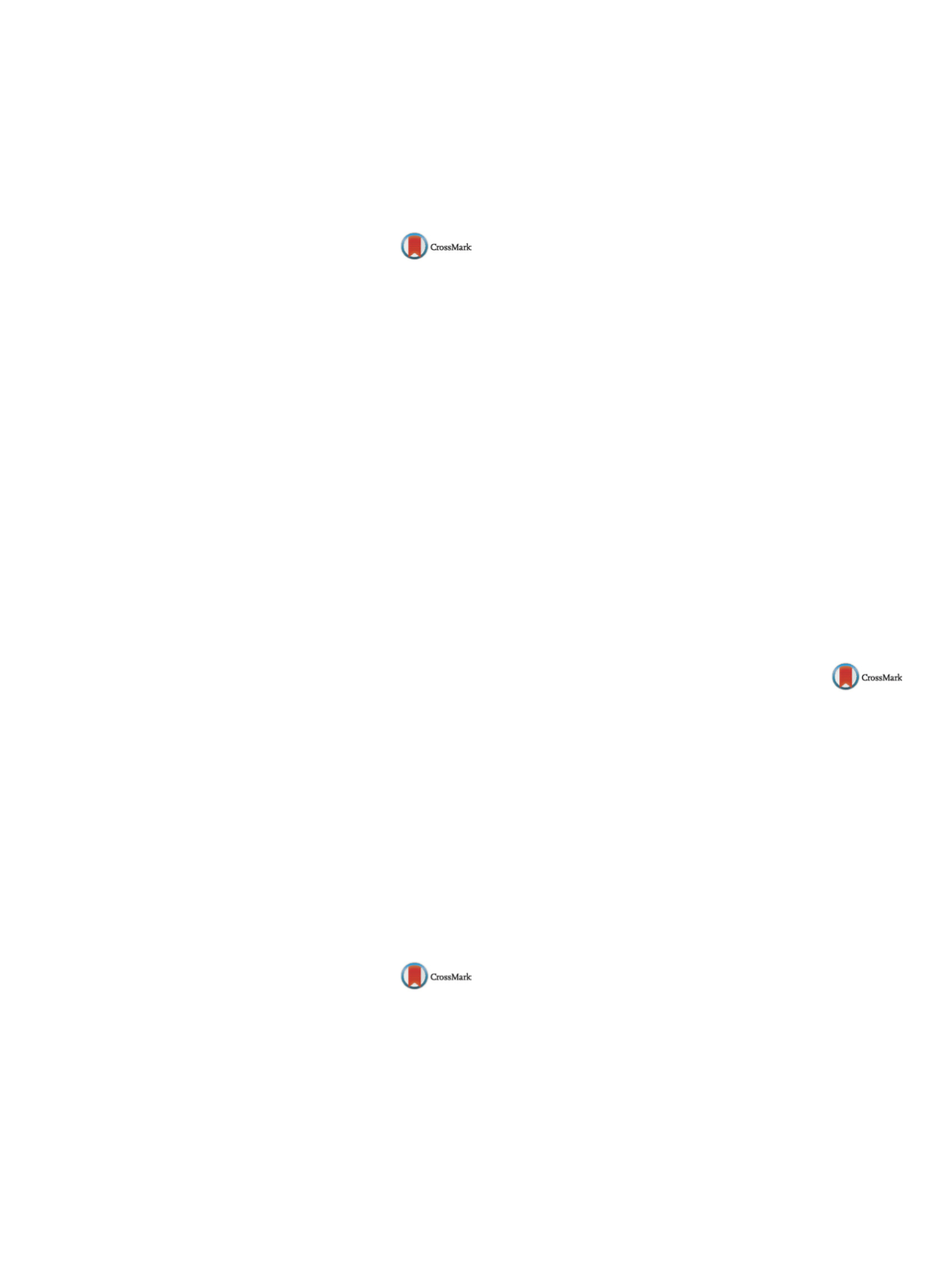

25th European Congress of Psychiatry / European Psychiatry 41S (2017) S772–S846
S773
Conclusion
Group intervention in CG has proven effective in
this population, specially regarding depression and post-traumatic
stress levels.
Disclosure of interest
The authors have not supplied their decla-
ration of competing interest.
http://dx.doi.org/10.1016/j.eurpsy.2017.01.1458EV1129
Trait mindfulness at baseline predicts
increases in telomerase activity over
time
F.S. Bersani
1 ,∗
, A . Gilber
t 2 , M.Coccia
2 , C. Saron
3 , E. Epel
21
Sapienza University of Rome, Department of Neurology and
Psychiatry, Roma, Italy
2
University of California San Francisco, Department of Psychiatry,
San Francisco, USA
3
University of California Davis, Center for Mind and Brain, Davis, USA
∗
Corresponding author.
Introduction
Preliminary investigations of cross-sectional sam-
ples have linked trait mindfulness with measures related to the
hypothalamic–pituitary–adrenal (HPA)-mediated stress response
and to the inflammatory system, suggesting that this is one poten-
tial pathway linking mindfulness based interventions and health.
However, no previous studies explored the association between the
trait mindfulness construct and markers of cellular ageing.
Methods
In the current studywe examined in a sample of healthy
mothers (
n
= 92) of a child with Autism Spectrum Disorder (i.e.
women showing high levels of chronic psychological stress) the
prospective associations between a multidimensional scale of trait
mindfulness, the Five FacetMindfulness Questionnaire (FFMQ), and
telomerase activity (TA), a marker of cellular ageing and telomere
homeostasis. Participants’ trait mindfulness and TA were assessed
at baseline as well as 9 and 18 month follow-up.
Results
Analysis showed that higher levels of baseline mindful-
ness on FFMQ observation and describe subscales were related
to increase in TA from baseline to 9 month (
r
= 0.27,
P
= 0.03 and
r
= 0.24,
P
= .04, respectively). Additionally, the FFMQ Describe sub-
scale was related to increase in TA from baseline to 18 month
(
r
= .30,
P
= .02). Results are reported following covariate adjustment
of age, BMI, ethnicity, and education.
Discussion
Our results showed that higher levels of baseline
mindfulness are associated with higher increases in TA after
9months and 18months, with increased TA reportedly being asso-
ciatedwith decreased oxidative damage, increased telomere length
and overall more functional cellular physiology. These findings sup-
port a role of mindfulness-related interventions to increase general
and mental health.
Disclosure of interest
The authors have not supplied their decla-
ration of competing interest.
http://dx.doi.org/10.1016/j.eurpsy.2017.01.1459EV1130
The role of psychotherapy in
improving the quality of life and
social rehabilitation of patients with
Psoriasis
V. Bialuhina
1 ,∗
, I. Belugina
2 , L. Azarova
3 , N.Siatkovskaia
4 ,V. Siatkovski
3 , N.Jagovdik
21
Belarusian state medical university, Psychiatry and medical
psychology, Minsk, Belarus
2
Belarusian state medical university, Dermatology, Minsk, Belarus
3
Belarusian state university, Social work and rehabilitology, Minsk,
Belarus
4
Evergreen college, Psychology, Toronto, Canada
∗
Corresponding author.
Introduction
Psychotherapy can ease physical symptoms of
patients with skin pathology.
Objectives
To study features of social and psychological maladap-
tation and quality of life in patients with psoriasis.
Aim
To study psychotherapy role in quality of life improvement
and social rehabilitation of patients with psoriasis and their family
members for the period 2000–2015 in the Belarusian population.
Methods
One hundred and twenty four patients with cutaneous
psoriasis, 12 patientswith psoriatic arthritis and 42 healthy persons
were studied. Quality of life, types of attitude towards the disease,
level of social frustration, depression, level of social maladaptation,
psychological defense mechanisms and patients attitudes towards
psychotherapy were assessed.
Results
There were detected among patients with psoriasis
(especially with arthropathy form): social maladaptation, higher
level of social frustration and depression (
P
< 0.05), decrease in
quality of life (
P
< 0.001), the wider range of psychological defense
mechanisms (negation, regression, substitution, reactive forma-
tion,
P
< 0.05). Maladaptive types of attitude towards the disease
were presented in 24% patients with psoriasis and almost in 41%
patients with arthropathy.
Conclusions
Psychotherapy can have a high potential for social
rehabilitation and quality of life improvement for patients with
psoriasis. Obtained data in social maladaptation indicate family
therapy as an important therapeutic part for patients with pso-
riasis. Moreover, knowledge about patients psychological defense
mechanisms can help to choose a direction and methods of indi-
vidual psychotherapy of social maladaptation. This research shows
also that psychotherapeutic approach and family psychotherapy
remains underestimated in Belarus.
Disclosure of interest
The authors have not supplied their decla-
ration of competing interest.
http://dx.doi.org/10.1016/j.eurpsy.2017.01.1460EV1131
The evolution of cognitive
behavioural therapy – The third
generation and its effectiveness
S. Carvalho
1 ,∗
, C.P. Martins
1, H.S. Almeida
1, F. Silva
21
Hospital de Magalhães Lemos, Service B, Porto, Portugal
2
Hospital de Magalhães Lemos, Service C, Porto, Portugal
∗
Corresponding author.
Introduction
First wave cognitive behavioural therapy (CBT)
focuses essentially on classical conditioning and operant learning
and second wave on information processing. They are based on
the premise that certain cognitions, emotions and physiological
states lead to dysfunctional behaviour and so, by eliminating the
first ones, changes in behaviour will take place. Third wave CBT
appeared in an attempt to increase the effectiveness of first and
second wave by emphasizing contextual and experiential change
strategies.
Objectives/Aims
To make a review on the actual state of the art
of third wave CBT, focusing on MBSR (Mindfulness-Based Stress
Reduction), MCBT (Mindfulness-based Cognitive Behavioural
Therapy), DBT (Dialectical Behaviour Therapy), ACT (Accep-
tance and Commitment Therapy) and CFT (Compassion Focused
Therapy).
Methods
Research on PubMed using the terms “
third wave cogni-
tive behavioural therapy
”.
Results
Methods and targets differ between MBSR, MCBT, DBT,
ACT and CFT. Depression, anxiety and borderline personality disor-
ders are some of those targets. However, a transdiagnostic approach
is the hallmark of all third wave therapies: mental processes or
emotions transversal to many psychiatric disorders such as shame,
self-criticism, experiential avoidance or cognitive fusion are the
main focus, emphasizing the context and human experience over
any categorical diagnosis.


















